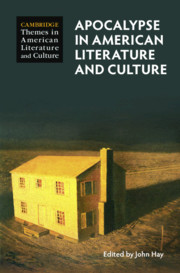111 results
Tropical vegetation productivity and atmospheric methane over the last 40,000 years from model simulations and stalagmites in Sulawesi, Indonesia
-
- Journal:
- Quaternary Research / Volume 118 / March 2024
- Published online by Cambridge University Press:
- 26 February 2024, pp. 126-141
-
- Article
-
- You have access
- Open access
- HTML
- Export citation
DEVELOPMENT OF THE INTCAL DATABASE
-
- Journal:
- Radiocarbon , First View
- Published online by Cambridge University Press:
- 28 July 2023, pp. 1-17
-
- Article
-
- You have access
- Open access
- HTML
- Export citation
More on seed longevity phenotyping
-
- Journal:
- Seed Science Research / Volume 32 / Issue 3 / September 2022
- Published online by Cambridge University Press:
- 29 March 2022, pp. 144-149
-
- Article
-
- You have access
- Open access
- HTML
- Export citation
558 - Multimodal EEG-MRI in the diagnosis of mild cognitive impairment with lewybodies
-
- Journal:
- International Psychogeriatrics / Volume 33 / Issue S1 / October 2021
- Published online by Cambridge University Press:
- 01 November 2021, pp. 97-98
-
- Article
-
- You have access
- Export citation
Imperfect Solutions to the Neoliberal Problem of Public Aging: A Critical Discourse Analysis of Public Narratives of Long-Term Residential Care
-
- Journal:
- Canadian Journal on Aging / La Revue canadienne du vieillissement / Volume 41 / Issue 1 / March 2022
- Published online by Cambridge University Press:
- 06 September 2021, pp. 121-134
-
- Article
-
- You have access
- HTML
- Export citation
Figures
-
- Book:
- Apocalypse in American Literature and Culture
- Published online:
- 03 December 2020
- Print publication:
- 17 December 2020, pp viii-viii
-
- Chapter
- Export citation
Part I - America as Apocalypse
-
- Book:
- Apocalypse in American Literature and Culture
- Published online:
- 03 December 2020
- Print publication:
- 17 December 2020, pp 15-68
-
- Chapter
- Export citation
Index
-
- Book:
- Apocalypse in American Literature and Culture
- Published online:
- 03 December 2020
- Print publication:
- 17 December 2020, pp 333-336
-
- Chapter
- Export citation
Part II - American Apocalypse in (and out of) History
-
- Book:
- Apocalypse in American Literature and Culture
- Published online:
- 03 December 2020
- Print publication:
- 17 December 2020, pp 69-224
-
- Chapter
- Export citation
Contents
-
- Book:
- Apocalypse in American Literature and Culture
- Published online:
- 03 December 2020
- Print publication:
- 17 December 2020, pp v-vii
-
- Chapter
- Export citation
Further Reading
-
- Book:
- Apocalypse in American Literature and Culture
- Published online:
- 03 December 2020
- Print publication:
- 17 December 2020, pp 328-332
-
- Chapter
- Export citation
Introduction - The United States of Apocalypse
-
-
- Book:
- Apocalypse in American Literature and Culture
- Published online:
- 03 December 2020
- Print publication:
- 17 December 2020, pp 1-14
-
- Chapter
- Export citation
Contributors
-
- Book:
- Apocalypse in American Literature and Culture
- Published online:
- 03 December 2020
- Print publication:
- 17 December 2020, pp ix-xiv
-
- Chapter
- Export citation
Copyright page
-
- Book:
- Apocalypse in American Literature and Culture
- Published online:
- 03 December 2020
- Print publication:
- 17 December 2020, pp iv-iv
-
- Chapter
- Export citation
Part III - Varieties of Apocalyptic Experience
-
- Book:
- Apocalypse in American Literature and Culture
- Published online:
- 03 December 2020
- Print publication:
- 17 December 2020, pp 225-327
-
- Chapter
- Export citation

Apocalypse in American Literature and Culture
-
- Published online:
- 03 December 2020
- Print publication:
- 17 December 2020
Individual crop size increases predispersal predation by beetles in a tropical palm
-
- Journal:
- Seed Science Research / Volume 31 / Issue 1 / March 2021
- Published online by Cambridge University Press:
- 24 November 2020, pp. 43-46
-
- Article
- Export citation
Deriving symptom networks from digital phenotyping data in serious mental illness
-
- Journal:
- BJPsych Open / Volume 6 / Issue 6 / November 2020
- Published online by Cambridge University Press:
- 03 November 2020, e135
-
- Article
-
- You have access
- Open access
- HTML
- Export citation
The IntCal20 Northern Hemisphere Radiocarbon Age Calibration Curve (0–55 cal kBP)
- Part of
-
- Journal:
- Radiocarbon / Volume 62 / Issue 4 / August 2020
- Published online by Cambridge University Press:
- 12 August 2020, pp. 725-757
- Print publication:
- August 2020
-
- Article
-
- You have access
- Open access
- HTML
- Export citation
Optimizing utilization of beta-lactam surgical prophylaxis through implementation of a structured allergy assessment tool in a presurgical clinic
-
- Journal:
- Infection Control & Hospital Epidemiology / Volume 40 / Issue 12 / December 2019
- Published online by Cambridge University Press:
- 30 September 2019, pp. 1420-1422
- Print publication:
- December 2019
-
- Article
- Export citation



